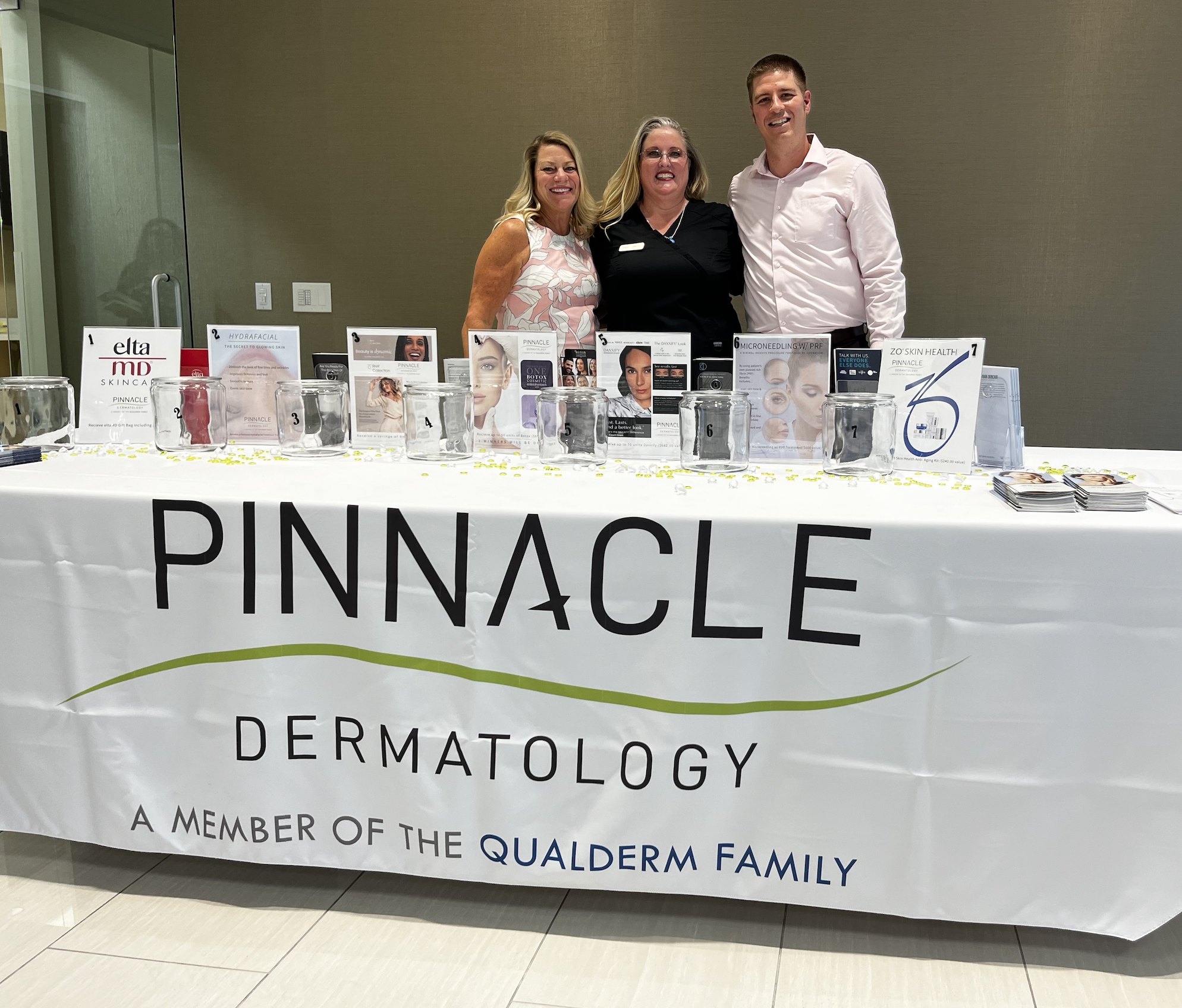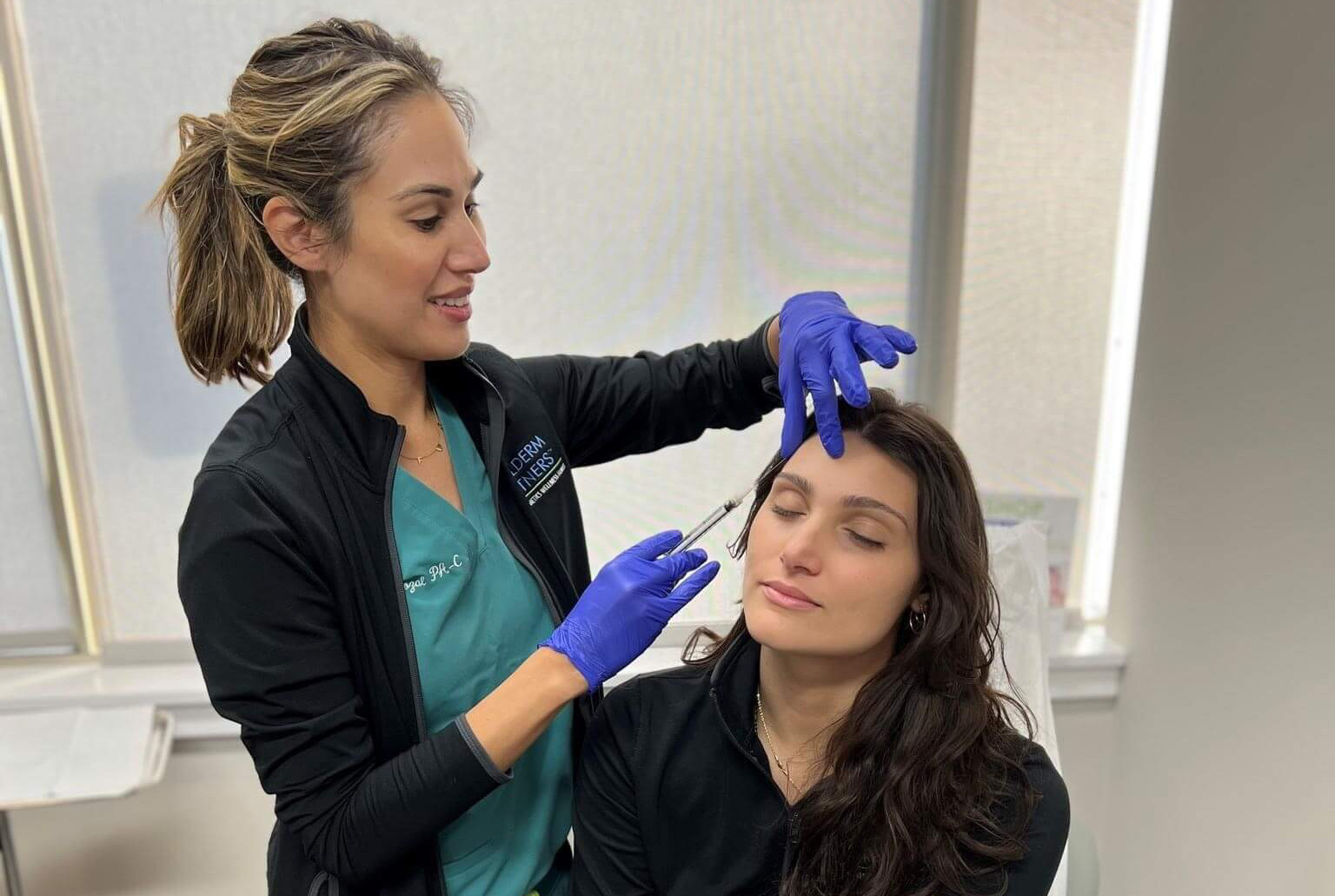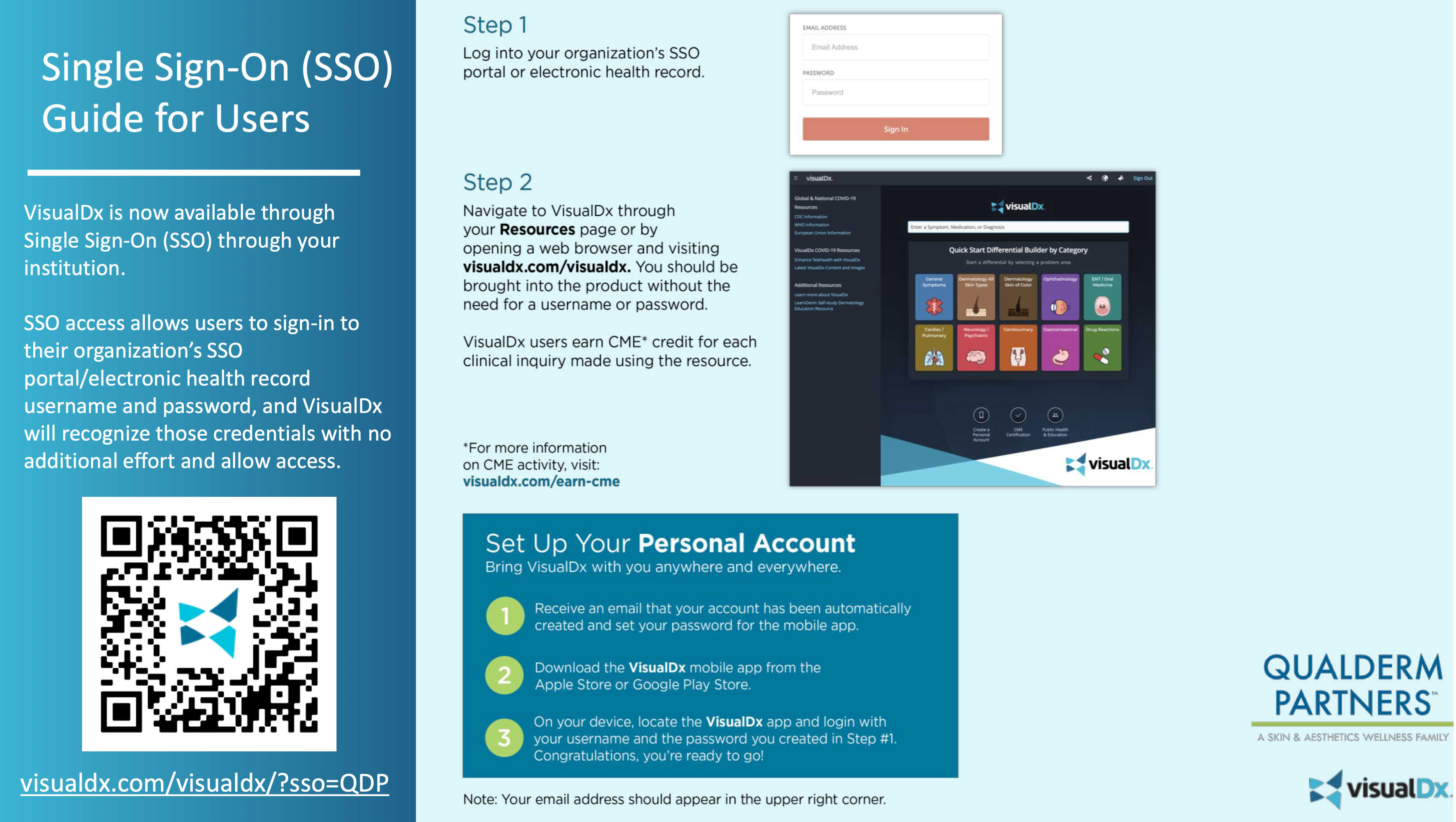Provider Pulse - July 2025
 As I reflect on my first few months as Chief Medical Officer, I extend my heartfelt thanks to each of you. It’s been an honor to work alongside such talented and dedicated providers. Every day, I’m reminded of the exceptional care you deliver and the passion you bring to your work.
As I reflect on my first few months as Chief Medical Officer, I extend my heartfelt thanks to each of you. It’s been an honor to work alongside such talented and dedicated providers. Every day, I’m reminded of the exceptional care you deliver and the passion you bring to your work. While I’m proud of what we’ve already accomplished together, I’m even more energized by what lies ahead. Our shared commitment to clinical excellence demands ongoing effort—refining workflows, enhancing patient experiences, supporting one other, and holding ourselves to the highest standards in care and communication. There’s no shortcut to becoming a truly great organization, but I believe we have the people, the vision, and the heart to get there.
Most importantly, I want you to know how much I value your perspective. Open and honest communication is essential for us to grow—both as a company and as a community of providers. I welcome your ideas, concerns, and feedback. Whether through direct conversation, email, or future forums, I hope we can continue building a culture where every provider feels heard, respected, and supported.
The QDP Provider Pulse reflects my commitment to open communication. Through this newsletter, I aim to keep you informed about important company developments and share clinical insights that keep us aligned on best practices in our field.
Thank you again for all that you do. I’m excited about what we can achieve together.
Sincerely,
Jake E. Turrentine, MD

Clinical Corner
Service Animals in the Clinical Setting
This month’s topic focuses on service animals in healthcare environments, especially in relation to Mohs surgery suites. QualDerm is committed to full compliance with the Americans with Disabilities Act (ADA), and this issue has recently been the subject of discussion across our network. Providers and staff need to understand the distinctions between service animals and emotional support animals as well as how to handle these situations appropriately.
Key Points to Know
- Under the ADA, only service animals are permitted in clinical areas, including dermatology and Mohs surgery sites.
- A service animal is defined as a dog or miniature horse that has been individually trained to perform specific tasks for a person with a disability. Examples include:
- Guiding individuals who are blind
- Alerting people who are deaf
- Pulling a wheelchair
- Alerting and protecting someone having a seizure
- Reminding a person with mental illness to take prescribed medication
- Service animals are NOT pets. Their primary role is to assist their handler by performing specific, trained tasks.
- A service animal is not the same as an emotional support animal (ESA).
- ESAs provide companionship to ease emotional or psychological distress (such as anxiety or depression) for individuals with a mental health or psychiatric disability.
- Unlike service animals, they do not require any specific training to perform tasks related to a disability. Their primary role is to provide emotional comfort through their presence, rather than performing trained tasks.
- They can be any species.
- ESAs are not protected under the ADA for access to healthcare settings.
What Can Staff Ask?
To determine whether an animal qualifies as a service animal, staff may ask only two questions:
- Is the animal required because of a disability?
- What work or task has the animal been trained to perform?
Important: Staff may not ask these questions if it’s readily apparent that the animal is trained to perform a task for an individual with a disability (e.g., a guide dog leading a blind individual). Staff may not request documentation, ask the animal to demonstrate its task, or inquire about the nature of the individual’s disability.
Service Animals and Surgical Environments
- Service animals may be restricted from entering sterile operating room environments (e.g., rooms where all personnel wear gowns, gloves, and masks and perform sterile procedures such as deep abdominal surgery).
- However, Mohs and most dermatologic procedures are performed in non-sterile procedure rooms where service animals are generally permitted unless there is a clear, specific safety concern.
- Denying entry to a service animal must be a case-by-case decision, based on facts—not a general belief that the animal presents an infection risk.
- A clean, well-groomed, housebroken service animal under control of its handler is no more likely to transmit germs or disease than a human. However, access may be denied if the animal:
- Is not under control
- Is not housebroken
- Consider the animal’s position during the procedure.
- A dog quietly sitting in the corner or on a family member’s lap is generally acceptable.
- However, a patient holding the service animal during surgery may not be appropriate, depending on the procedure.
If you have specific questions about service animals in your clinic, please reach out to your practice manager or the compliance team for guidance.
Provider Recruitment
Help Us Grow Our Team
 The most effective method of recruiting and retaining high-quality providers is through personal referrals. When we bring in people we know and trust, we strengthen our team and culture. We currently have a wide range of openings throughout our organization, and your referrals can make a meaningful difference. QualDerm offers a referral bonus program to providers who help us recruit and employ new clinical talent:
The most effective method of recruiting and retaining high-quality providers is through personal referrals. When we bring in people we know and trust, we strengthen our team and culture. We currently have a wide range of openings throughout our organization, and your referrals can make a meaningful difference. QualDerm offers a referral bonus program to providers who help us recruit and employ new clinical talent:
$10,000 if you refer an MD/DO
$7,000 for an APP with dermatology experience
$5,000 for an APP without prior dermatology experience
Thank you for helping us grow with great people.
Click here for more information about the referral bonus program.
Provider Achievements
This section of QDP Provider Pulse is dedicated to celebrating our talented and inspiring team. Whether the achievement is professional or personal, I want to recognize the many ways you’re making a difference and pursuing excellence.
Examples might include:
• Election to a regional or national dermatology society
• Appointment to an editorial board
• Completing a marathon or other personal milestone
• Earning a community service award
• Learning a new language or skill
If you have an achievement to share, please email me at jake.turrentine@skinsurgerycenter.net so that I can consider it for a future issue. Let’s celebrate each other.
Achievement Photo Caption: Our Practice Manager, Janice Smith, joined fellow Indiana dermatologists and patient advocates at the AADA Legislative Conference in Washington, D.C., advocating for Medicare stability and step therapy reform.
Pictured left to right: Dr. Carrie Davis, Dr. C. William Hanke, Dr. Ginat Mirowski, Dr. Dara Spearman, Sen. Mike Braun, Dr. A. David Soleymani, Dr. Lori Sanford, Dr. Andrew Bridge, and Janice Smith.
Compliance Update
MIPS Quality Scores: Progress and Opportunity
We’re off to a strong start with our MIPS Quality Scores, but we can do better.
Our company is divided into eight groups based on Taxpayer Identification Numbers (TINs): ADNCO, NC, Derm Affiliates, VOO Macaione and Papa, Z&B, Pinnacle Dermatology, CSD, and Cumberland. Each group can submit six measures to CMS and is allowed to choose the six in which the group performs best. Our goal is to achieve as close to 60 points as possible across these six measures.
Measure | % Needed to Achieve Top Score | Comments |
|---|---|---|
47: Advance Care Plan | 100% = 10 points | This is a yes or no question, and you get credit whether or not the patient has an advance care plan, you just have to ask. If the question was missed during the visit, you can call the patient and update the clipboard afterward to correct it. |
| 226: Tobacco use screening & cessation intervention | 100% = 10 points | You can go back and call patients where this was missed, but you have to provide counseling and document it in a chart note to be able to override it. An MA/nurse can provide/document the counseling. |
| 238: High risk meds in older adults | 0% = 10 points (inverse measure) | This is calculated automatically in EMA. It is best to avoid writing for multiple high-risk medications such as hydroxyzine in elderly patients. |
| 394: Immunizations in Adolescents | >75.3% = 10 points | This question applies only to patients who are 13 years old or will turn 13 in 2025. We must capture more data as we appear to be missing this question’s data points. |
| 485: Improvement in Psoriasis Itch Severity | 96.3% = 10 points | Record itch scores where applicable. |
| 486: Improvement in Dermatitis Itch Severity | 95.83% = 10 points | Record itch scores where applicable. |
| 410: Clinical Response to Systemic Medications | 100% = 10 points | Remember to document EXCEPTIONS. |
| 355: Unplanned reoperation within the 30 day post-operative period | 0% (inverse measure) = 10 points | For Derm, only Soft Tissue Excision codes qualify. |
| 357: Surgical site infection (SSI) | 0% (inverse measure) = 10 points | For Derm, only Soft Tissue Excision codes qualify. |
New CLIA Requirements for Laboratory Directors
New CLIA regulations introduce important changes to the qualifications and responsibilities of lab directors for moderate and high-complexity laboratories. These changes were effective as of December 28, 2024. Below is a summary of key updates:
New Requirements for All Directors
- Directors must complete 20 continuing education credits covering laboratory director responsibilities (exception: MDs/DOs who are board-certified in pathology are exempt).
- Lab directors who were qualified and serving before December 28, 2024, may continue in their current positions even if they don't meet the new requirements (grandfather clause). However, they must meet the new requirements if they move to a different facility.
On-Site Visit Requirements
- Lab directors must visit the lab at least once every six months.
- Visits must be spaced at a minimum of four months apart.
- All visits must be documented, including evidence of completed responsibilities.
NOTE: These requirements apply only to directors of moderate and high-complexity labs—not to PPM (Provider-Performed Microscopy) labs.
Tools & Support
We are committed to supporting lab directors in meeting these new standards. Resources include:
- CME Credit Assistance: We have tools to assist with the 20-hour CME requirement in the rare cases where it is required (see Options for CLIA CME info below).
- Visit Documentation Form: A standardized form is available to document your completed responsibilities at the lab visits. If you are a lab director and have not received the form, please let me know as soon as possible at jake.turrentine@skinsurgerycenter.net.
- Lab Maintenance Binders: We are working to provide binders to help labs organize and retain evidence of lab maintenance (this is primarily to assist labs that may not currently have adequate binders to track items expected by CLIA).
Options for CLIA CME
These programs are tailored to satisfy the updated CLIA requirements effective December 28, 2024, ensuring compliance for aspiring or current laboratory directors of moderate or high-complexity labs.
College of American Pathologists (CAP) Education Program
- Program Name: Education Program for CLIA Laboratory Directors
- Credits: 20 CME/CEU
- Format: Online courses covering topics such as regulatory compliance, laboratory leadership, risk management, and operations
- Cost: $550
- Details: Designed for non-pathologist physicians and laboratory professionals to meet CLIA requirements for moderate or high-complexity labs. Accessible online with a structured curriculum.
- https://education.cap.org/clialabdir
LabUniversity CME Program
- Program Name: Lab Director CME Program
- Credits: 20 CME
- Format: Eight self-paced online courses focusing on laboratory practice, regulatory compliance, and director responsibilities
- Cost: $625 (or $725 with additional staff training)
- Details: Includes interactive exercises and flexible learning options.
- https://labuniversity.org/lab-director-cme-program/
COLA Academy Laboratory Director Certification
- Program Name: Laboratory Director CME Certification
- Credits: 20 CME/CEU
- Format: Online certification course designed to meet CMS requirements for moderate and high-complexity labs
- Cost: Pricing not specified; contact COLA for details
- Details: Covers laboratory operations management, staff oversight, and regulatory compliance. Includes cloud-based tracking for training progress.
- https://education.lms.cola.org/catalog/info/id:133
Opportunities

Grand Rounds
Grand Rounds has been excellent recently. The next session will take place on August 12 at 8 p.m. EST. CME credit is offered if enough cases (4-5) are submitted in advance of the meeting. If you encounter an interesting or educational case that could benefit our network of providers, please consider sharing it. To submit a case, email Sheri Kimbro at sheri.kimbro@qualderm.com with your topic. She will assist you with the logistics for your presentation. Presenters will receive a token of appreciation, such as a QDP coffee mug, tumbler, or tote bag.

VisualDx Access
As a reminder, VisualDx is available to all QualDerm providers at no cost. This powerful tool can assist with diagnosis and patient education materials. Click here for instructions on how to log in using your QualDerm credentials.
Excellence is never an accident. it is always the result of high intention, sincere effort, and intelligent execution. – Aristotle

